
views
Improving Your Technique
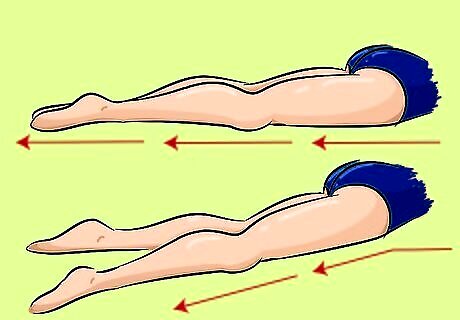
Decrease your drag. Swimmers often focus on swimming as fast as possible, not swimming with the least amount of drag. Drag is the resistance your body has against the water. Remember that it takes true skill, not just force, to bring down that drag. There are many ways to decrease your drag, such as improving your balance, kicking right or swimming taller.
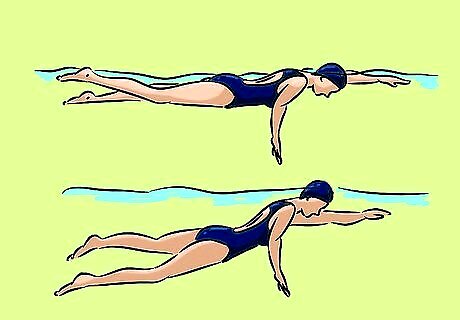
Improve your balance. This is a great way to decrease your drag. To stay balanced, maintain a position that is as horizontal as it can possibly be as you move through the water. This will make it so that the least amount of water gets in your path, slowing you down. This is especially important for the freestyle stroke, where you have to keep yourself from lifting your head too much, which disrupts your balance, so you have to kick harder to counterbalance. This is a bit different when it comes to the breaststroke and butterfly stroke, because your body undulates instead of being perfectly balanced during the strokes.
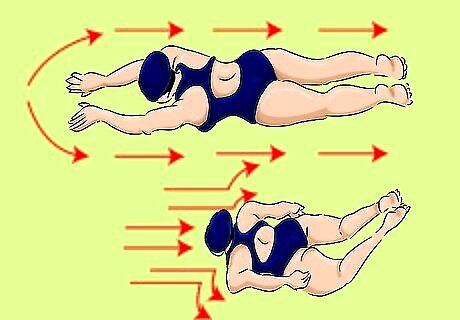
Swim taller. Try to make yourself as tall as possible when you're in the water. The taller or longer you are, the better and faster you can swim. For example, to swim taller during the free stroke, you have to enter your recovering arm into the water early, once it passes over your head; you should extend your recovering arm forward as far is it will go before you begin the down sweep and catch. Think about it: if your body is all scrunched up instead of stretched nice and tall, it'll be more difficult to move through the water.
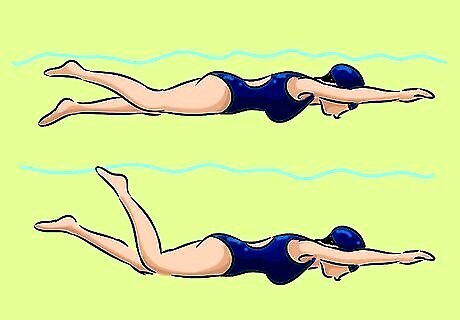
Kick efficiently. When you kick, you shouldn't break the surface of the water or move your legs too low below the body line—it all goes back to maintaining balance. If you do this, you'll be off balance, creating more drag.

Improve your propulsion. This does not mean you should focus more on strength than skill. Remember that about 10% of your speed comes from your legs, while the rest comes from your arms, so you should focus on pulling hard and making sure your legs don't slow you down, but instead help propel you forward faster.
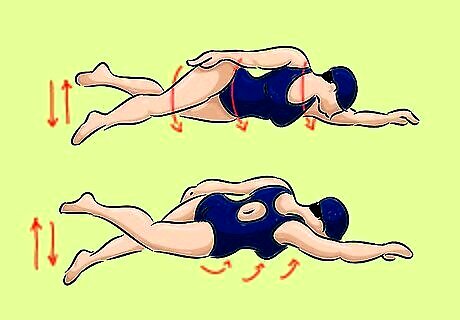
Use your sides. Don't be afraid to roll from side to side a bit more as you use each arm stroke. This will let you make better use of those big back muscles and will also make better use of your shoulder strength. It does take some getting used to in practice, but once you get the hang of it, you'll have a better command of your strength, as well as your speed.
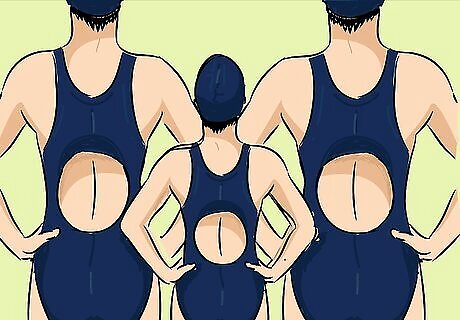
Don't forget your core muscles. The core is made up of your back, hip, abdomen (abs), and torso muscles, and it's especially important to use it when you're rolling from side to side. Making use of those muscles will help you swim more cleanly and more quickly, though it may feel a bit awkward to place more emphasis on your core instead of your arms and legs, at first. Try purposefully tensing them up to keep your body straighter, too.

Anchor your arms. In order to maximize your speed, you have to align your hand and your forearm and have them face backwards. This makes it easier to move your arm backward for strokes. You might have heard of this technique as the high elbow catch during the freestyle stroke, because you have to keep your elbow above your head to really master this move.
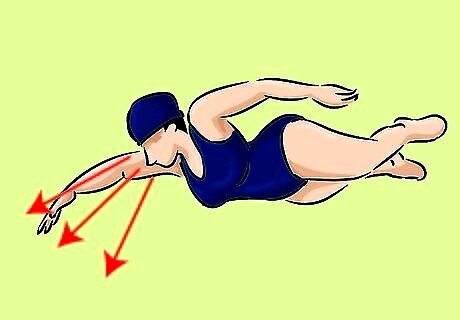
Maintain a neutral head position. To swim as fast as possible, aim to have a neutral head position throughout your stroke. Keeping your head positioned this way reduces drag and makes strokes more efficient. If your head isn't centered, you'll be swimming to one side. Incorrect head position may be the reason you feel you are "sinking" because of lowered hips or muscular legs. You should be looking down, not up or forward, to keep your body as horizontal as possible in the freestyle position. To keep your head and eyes down, keep your neck relaxed; this will keep your lower body higher in the water. If you're more of a visual thinker, take this advice from the swimmer, Garret McCaffery: “Imagine you are a whale, there is a blowhole on your neck, and you need that hole accessible at all times so you can breathe or you will die. If your neck is angled you closed the hole and you can’t breathe. You need to position your head so your neck is at the right angle.”
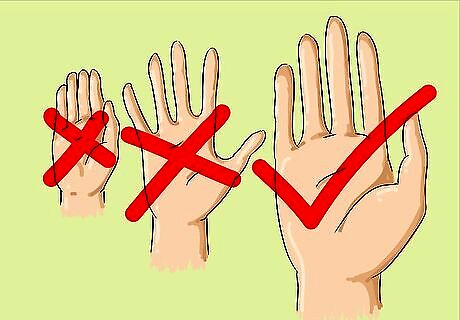
Spread your fingers when you swim. By spreading your fingers slightly, instead of clamping them together, you create an "invisible web" that can help exert 53% more force! The ideal spacing is 20-40% of the diameter of the finger. Though this will not make as big of a difference as the other steps, together it will help to make you faster.
Swimming Faster During Races

Avoid illegal turns. Even when you're not in a race, avoid making illegal turns when you swim, so you don't get into the habit. Just like maintaining a neutral head position, doing what you're going to do on race day in practice will allow you to swim faster.
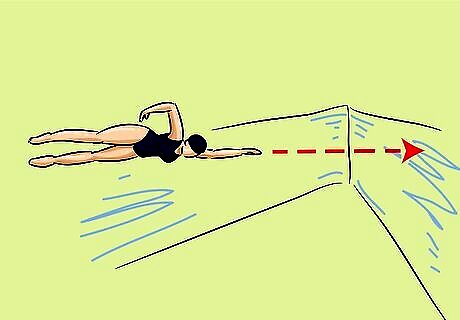
Approach walls quickly. A lot of swimmers think of the walls as a comfy little resting place, even if they're only "resting" there for a fraction of a second. However, if you want to swim faster, then this absolutely cannot be you. Approach the wall quickly, with your head down for at least two strokes in all of the strokes you're swimming except the breaststroke. This will help you get the lead you may need to beat your best race time—and the swimmers in the other lanes.

Make sure to kick through your break outs. When you're pushing off the wall, make sure to use a strong kick off it to keep up the speed you've gained. For a breaststroke, doing a full pull out can give you that extra edge. Continue to maintain a tight streamline while you're doing this, and you'll see that you'll soon be swimming faster than ever.
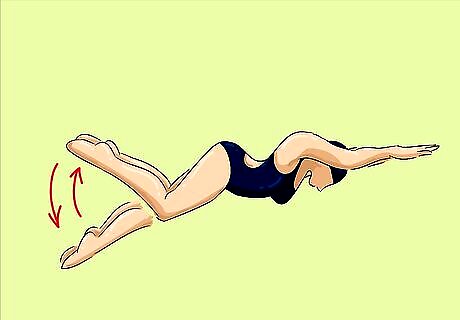
Dolphin kick under the water. If you're already using a powerful kick, you can go even faster by dolphin kicking off the wall. Dolphin kicking off the wall can make you go even faster, and having a strong underwater kick can increase your lung capacity. You may want to talk with a coach about this, because some swimmers go faster with long underwater kicks, and some don't, but some good general advice is to stop dolphin kicking and surface once you physically feel yourself slowing down, or if you reach the 15 meter (49.2 ft) or yard marker.
Being Persistent

Develop a structured routine. If you're part of a team, then the coach will provide a structured routine for you. But it's always good to have your own routine as well, for personal practice. Having a routine that has elements of aerobic exercise, (which means swimming for longer) as well as a moderate endurance workout (which focuses on mid-distance and moderately hard swimming) can help you get faster. Your workout should have several elements but the main part should focus on endurance, speed, and muscular endurance. Here's an example of a structured workout you can try: 10-15% spent on an easy warm up (4 x 100 easy swimming with 20 seconds of rest between each distance) 10-20% spent on drills and kicking (8 x 50s as an alternating drill, with 1 kick with 15 seconds of rest) 40-70% spent on the main set (6 x 200 with 30 seconds of rest or 12 x 100 with 15 seconds of rest) 5-10% spent on cooling down (easy 100s)
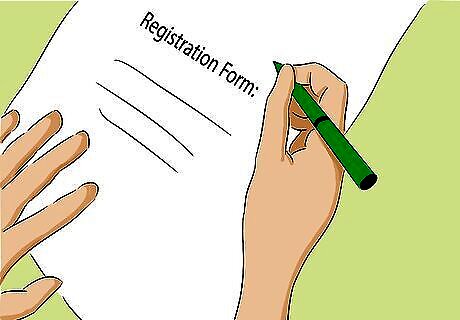
Join a swim team. Search for swim teams in your area, and find information such as how much it costs to register, what time practice is at, and what equipment you need. If you're not already on a team, being on one can definitely help you swim faster not only because you'll have more motivation to practice every day, but because you'll also get more practice during races and will be working with a coach who can help you master the correct technique. If you do join a team, you have to commit to coming to practice every day. Push yourself at practice. Try to make the send-offs with 5-7 seconds rest. Once you've mastered that, try 10 seconds, 15, and so on.
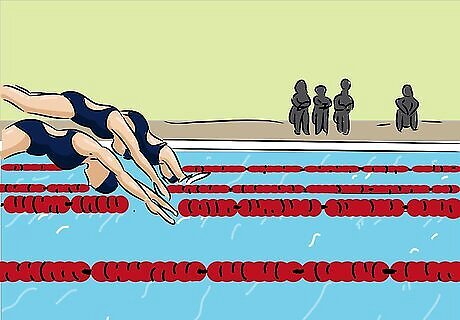
Participate in swim meets. If you are on a swim team, then you'll be participating in swim meets regularly. Don't be nervous; it's not about getting first place, but about beating your best time. Most swimmers swim faster during swim meets than practice, because adrenaline is high and there's more at stake. You can "trick" your body into swimming faster just by attending swim meets.

Attend a swim clinic. Swim clinics can teach you better form for your strokes, tips for achieving more, can help you with your dives and turns, and may generally give you an unforgettable experience. You'll be motivated by meeting other people who are as excited about swimming as you are. Some swim clinics even have Olympic athletes as coaches. They may be costly, but many will say that they are worth it. You may even be able to find a clinic or a coach who can film you while you're swimming, providing valuable feedback about how you can improve your technique. It's hard to know where you can improve without having someone else watch you swim.

Get more informed about swimming. Watch videos and read books about swimming to get a better sense of what it means to swim faster. There are lots of videos on YouTube on how to improve your strokes. Also, there are lots of books about better stroke technique. Try to get books like that, or books about the success of swimmers like Michael Phelps, Ryan Lochte, and Missy Franklin to get motivated. Though using your body to swim faster is important, it doesn't hurt to engage your mind, too.

Hit up the gym. Though practicing swimming itself is very important, you can also improve your speed by building a stronger body. Do some cardio work by running, train with weights, and do sit-ups to improve your core. Having stronger abs and arms can help you move through the water more quickly. Plus, this kind of workout can be a refreshing break from spending so much time in the water.
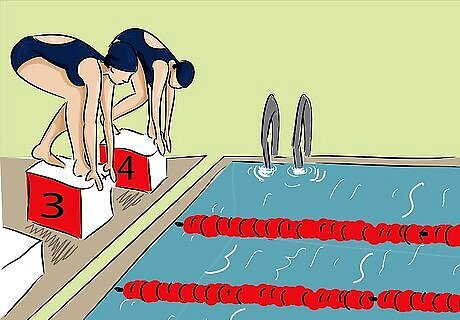
Let other people push you. If your friend is faster than you, and your goal is to be faster than him, think about that all during every practice to encourage you to work harder. Swimming alongside faster swimmers pushes you and helps you get faster, too. Just make sure the person next to you isn't so much faster than you that you get discouraged by the process.

Prepare your mind as well as your body. All of that physical work won't mean a thing if you're feeling too nervous or simply unmotivated. Stay focused and motivated throughout practice and get excited to be there on race day. Don't dread the meets, and instead, look at them as an opportunity to try to do your best. Remember that it's not about being the best swimmer on your team or at the meet, but about doing your personal best. This alone should motivate you to swim faster.











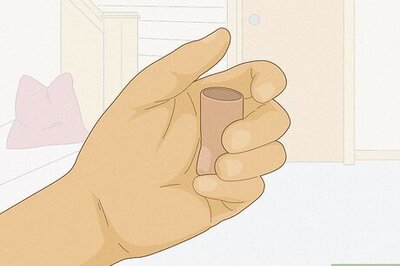



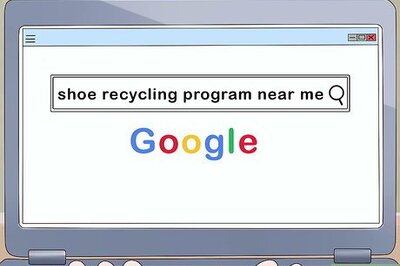

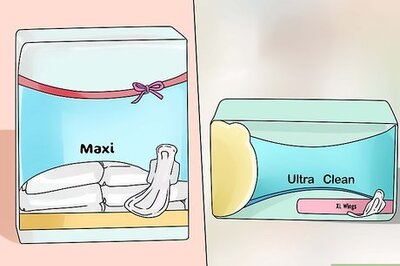

Comments
0 comment